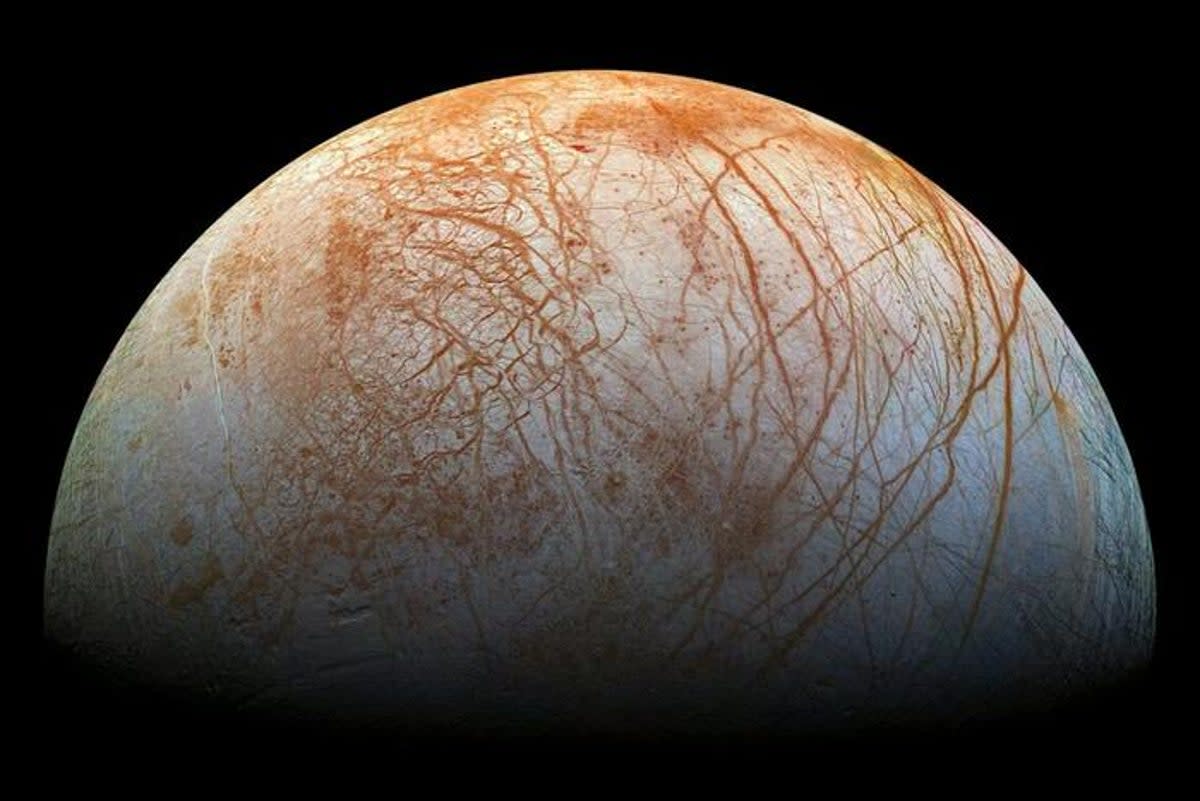Signs of alien life could be found in a single grain of ice in our solar system, scientists say

Alien life could be found in a tiny grain of ice, researchers have said.
The discovery suggests that upcoming telescopes might be able to spot extraterrestrial life relatively soon.
The oceans of some moons orbiting Saturn and Jupiter are key places for the search for alien life. Researchers believe that moons such as Enceladus and Europa – which have oceans underneath an icy crust – could serve as home for other living beings within our solar system.
To find them, however, researchers need to analyse that water for signs of life. Doing so has proven difficult given it is contained within that icy crust in distant planets.
One potential cause for hope, however, is the plumes that spew out of that icy crust. Scientists have already sent spacecraft to fly through those plumes and examine them – and will be sending yet more later this year.
Now scientists have shown that it would be possible to find signs of alien life in samples taken from those plumes, even if it only existed in tiny amounts.
“For the first time we have shown that even a tiny fraction of cellular material could be identified by a mass spectrometer onboard a spacecraft,” said lead author Fabian Klenner, from the University of Washington.
“Our results give us more confidence that using upcoming instruments, we will be able to detect lifeforms similar to those on Earth, which we increasingly believe could be present on ocean-bearing moons.”
The Cassini mission, run by Nasa and other space agencies, already found cracks on the south pole of Enceladus, a moon around Saturn. Plumes containing gas and ice grains spew out of those cracks, it found.
Another mission, known as Europa Clipper, will launch in October carrying more instruments than its predecessor. It will look at Europa, a moon around Jupiter.
In the new work, scientists examined what it might be able to find. While it is difficult to simulate the actual process of sampling those plumes – they fly through space at around 5 kilometres per second and then hit the instrument – researchers were able to model it on Earth.
They send the liquid water into a vacuum, where it disintegrated into droplets. They then used a laser to excite those droplets and used sensors that were able to mimic those on the spacecraft.
They found that instruments intended for future space missions can find cellular material from those plumes – even if it is in just one of a hundreds of thousands of ice grains.
“With suitable instrumentation, such as the SUrface Dust Analyzer on NASA’s Europa Clipper space probe, it might be easier than we thought to find life, or traces of it, on icy moons,” said senior author Frank Postberg, a professor of planetary sciences at the Freie Universität Berlin. “If life is present there, of course, and cares to be enclosed in ice grains originating from an environment such as a subsurface water reservoir.”
The work is described in a new paper, ‘How to identify cell material in a single ice grain emitted from Enceladus or Europa’, published in the journal Cells.


